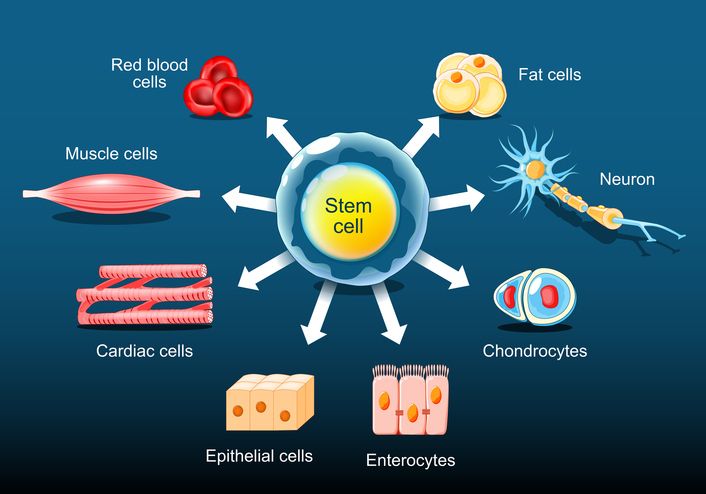Author: Natalie Ng|Updated: 16 May 2025
Estrogen plays a big part in shaping your breast size throughout life. It’s the hormone that kicks off breast development during puberty and continues to influence changes as your hormone levels rise and fall over time. You may notice subtle shifts in size during your menstrual cycles, more noticeable growth during pregnancy, and a gradual reduction in breast density as you move through menopause. Genetics set your natural shape, but hormones like estrogen still have a strong influence. Factors like body fat, age, and different types of hormone therapy also affect how your breasts look and feel. Whether you're going through natural changes, taking estrogen as part of gender affirming hormone therapy, or exploring medical treatment, these shifts can have a real impact. You may be wondering what changes are expected and when it’s worth checking in with a healthcare provider. This article sorts out what’s based on real science—and what’s mostly hype. Keep reading to learn the facts about estrogen and breast growth, without the confusion.

Estrogen's Role in Breast Development

Estrogen stimulates changes in the breast area from puberty onward
Estrogen is a key hormone in breast development. It helps shape the way breasts grow, especially during major life stages like puberty, pregnancy, and menopause. When estrogen levels rise, it signals the body to start building up breast tissue.
Growth starts in puberty
Most people start to notice breast growth between ages 8 and 13. During this time, estrogen stimulates the development of breast ducts, glandular tissue, and fatty tissue. These changes form the early structure of the breasts and can continue for several years.
Estrogen works with other hormones
While estrogen plays a leading role, it doesn’t work alone. Hormones like progesterone also help support breast enlargement and density. This combination helps shape the overall size and feel of the breasts over time. Together, they support changes in both glandular and fatty tissue, which affect breast volume and shape.
Hormone levels shape each person’s development
Hormonal balance varies from person to person. Some may have higher levels of estrogen, which can lead to larger breasts, while others may see less growth. Genetics, weight, and body fat levels also influence how the chest develops. People taking estrogen as part of gender affirming hormone therapy or hormone replacement therapy may notice changes in breast size and density over time, usually starting around the first three months.
Keep in mind that breast size changes are gradual, and some shifts—like swelling from fluid retention during menstrual cycles—are temporary. But estrogen remains one of the most important drivers of long-term breast development.

Puberty and Estrogen's Effect on Early Breast Growth

Estrogen begins breast development during early puberty
During puberty, your body starts producing higher levels of estrogen. This increase activates growth in the breast area, usually between the ages of 8 and 13. The first signs often include small, sore lumps under the nipples known as breast buds. These early changes mark the start of glandular tissue growth and the formation of breast ducts.
Growth happens in clear stages
As puberty continues, estrogen stimulates both the glandular and fatty tissue in your breasts. You may notice changes like a widening areola, a soft cone-shaped form, and a gradual increase in breast volume. This process often happens over a few years and follows a predictable path, though the speed and shape of growth vary.
One side may grow faster than the other
It's common for one breast to grow faster or appear larger during puberty. This difference usually evens out over time and doesn't suggest a health concern. Estrogen affects each breast independently, and your body adjusts naturally as hormone levels rise and stabilize.
Body weight and genetics also influence breast shape
Although estrogen plays a key role, other factors like body fat and genetics help shape the outcome. People with higher body fat may experience fuller breast growth during puberty, while others may develop a smaller size based on their inherited traits. These factors work alongside your hormone levels to guide overall development.
This stage lays the foundation for long-term breast structure. Estrogen's early effects on the breast area continue to influence changes through later phases of life, including pregnancy, menstruation, and menopause.
Book Now to Experience
B6 Bust Lift Treatment
1 Minute Self-Registration
Date should not be before minimal date

Estrogen Changes Breast Size During Menstrual Cycles
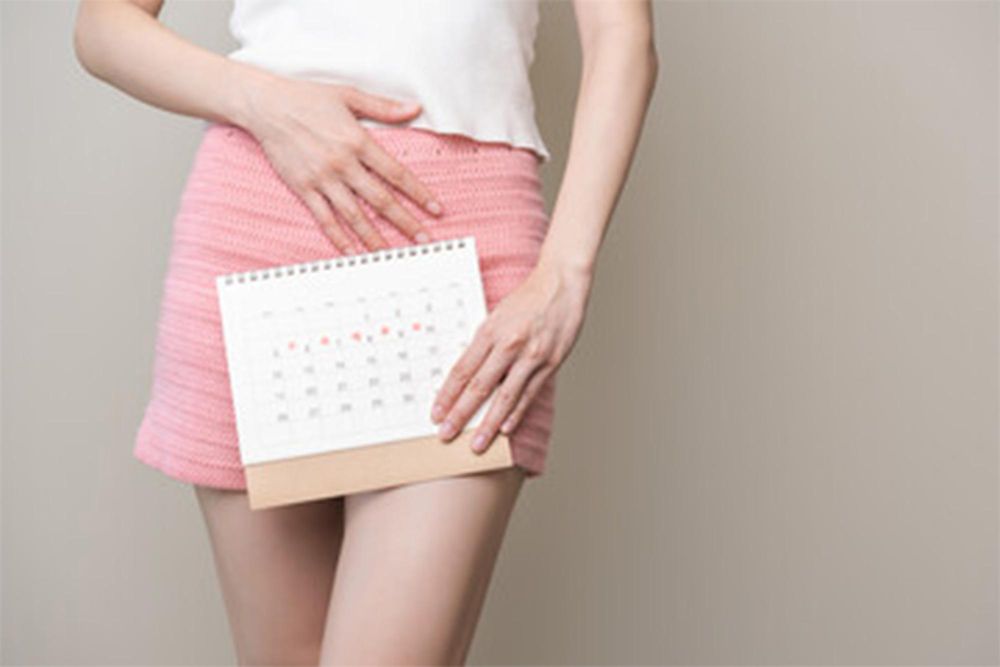
Estrogen and progesterone cause regular shifts in breast tissue
Throughout your menstrual cycle, hormone levels fluctuate. Estrogen rises during the first half (the follicular phase), while progesterone peaks in the second half (the luteal phase). These hormonal shifts affect breast tissue, often leading to noticeable changes in breast size, fullness, and sensitivity.
Subtle swelling before your period is common
As estrogen stimulates breast ducts and fatty tissue early in the cycle, many people notice a slight increase in breast volume leading up to ovulation. This swelling becomes more pronounced after ovulation, when progesterone increases. You might feel your breasts are heavier or rounder, and some people notice a half-cup size difference by the time their period starts.
Tenderness and fluid retention affect shape
In the luteal phase, fluid retention can make breasts feel sore or puffy. This temporary increase in size is common and usually goes away once your period begins. The effect is caused by changes in blood flow, water balance, and sensitivity in glandular and fatty tissue.
Changes are temporary and vary by person
Not everyone experiences these shifts the same way. Some notice them every cycle, while others feel almost no difference. Factors like hormone levels, body fat, and breast density all play a role. People taking estrogen as part of hormone replacement therapy or gender affirming hormone therapy may notice more defined patterns once hormone levels stabilize.
Tracking how your breasts feel during different phases of your cycle can help you understand what’s normal for your body. These fluctuations are a regular part of reproductive health and do not cause permanent breast enlargement, but they do show how responsive breast tissue is to hormones like estrogen.

Estrogen Increases Breast Size During Pregnancy

Estrogen levels rise quickly after conception
During pregnancy, your body produces high levels of estrogen to support fetal development. This surge also causes major changes in the breast area. Estrogen stimulates the growth of breast ducts, while progesterone prepares the glandular tissue for milk production. These changes usually begin in the early weeks of pregnancy and continue through each trimester.
Breasts may grow 1 to 2 cup sizes
As estrogen levels increase, many people notice a steady gain in breast volume. This growth often starts with a tingling sensation in the breast tissue, followed by swelling, fullness, and visible changes in the skin. Some people gain one to two cup sizes by the third trimester, especially if they had smaller breasts before pregnancy.
Areolas darken and glands become more visible
The areolas usually darken and expand. Small bumps called Montgomery’s tubercles may also become more prominent. These are natural oil-producing glands that protect the skin during breastfeeding and are stimulated by hormonal changes in the breast area.
Growth varies by person and pregnancy
Not every pregnancy causes the same amount of breast enlargement. Hormone levels, age, weight, and prior pregnancies all influence how much the breasts grow. People taking estrogen as part of medical treatment or hormone therapy may notice similar effects depending on the dosage and duration.
While these changes are temporary, they reflect how strongly estrogen affects breast tissue. After pregnancy and breastfeeding, the breasts often shrink in size as hormone levels return to normal. Supportive bras and proper breast care can help manage this transition comfortably.
Book Now to Experience
B6 Bust Lift Treatment
1 Minute Self-Registration
Date should not be before minimal date

Menopause Causes a Decline in Breast Size and Density

Lower estrogen levels reduce breast fullness
As menopause approaches, your body produces less estrogen. This decline leads to visible changes in the breast area. Glandular tissue that once contributed to breast density begins to shrink, and fatty tissue becomes more dominant. The result is often a softer texture and a noticeable drop in volume.
Breasts may become smaller and lose shape
It’s common for breasts to reduce by one to two cup sizes during menopause. You may notice less fullness at the top of the breasts and changes in how your bras fit. The breast shape often becomes more relaxed or flattened as the internal structure loses firmness.
Hormonal changes shift tissue composition
The balance between glandular tissue and fatty tissue changes. Estrogen stimulates breast development earlier in life, but without it, the dense breast tissue fades. Ligaments that support the chest area also weaken over time, which can make breasts appear lower on the chest.
Breast density decreases with age
Lower estrogen levels lead to reduced breast density. Breasts become more fatty and less glandular, which also affects how they feel during self-exams. This change is most common between ages 45 and 55 but can start earlier or later depending on individual hormone levels and overall health.
These changes are a natural part of aging. Staying at a healthy weight, wearing supportive bras, and checking in with your healthcare provider can help you feel more comfortable as your breasts adapt to this new phase. Hormone replacement therapy may be discussed in some cases to support overall well being and hormonal balance.

Estrogen in Hormone Therapy Can Increase Breast Size
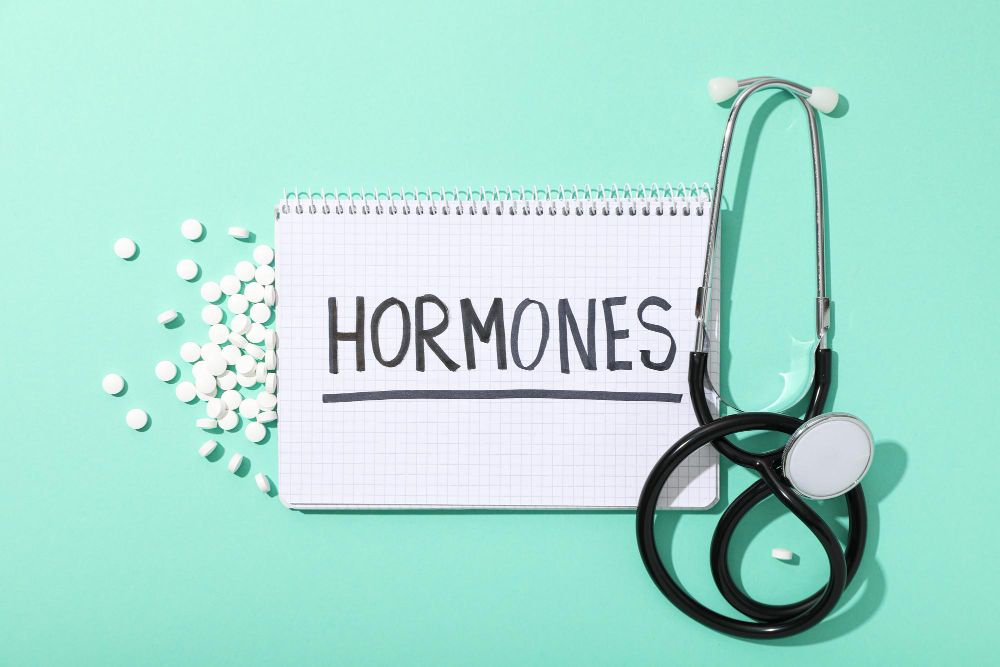
Hormone therapy can stimulate breast growth in adults
People undergoing hormone replacement therapy (HRT) or gender affirming hormone therapy often experience changes in breast size. Taking estrogen as part of medical treatment can activate similar processes seen during puberty or pregnancy. Estrogen stimulates the growth of breast ducts and glandular tissue, leading to visible breast development over time.
Growth usually begins within the first few months
In many cases, people notice early signs of breast development within three months of starting estrogen therapy. This might include a tingling feeling in the chest area, swelling around the nipples, and soft tissue growth under the skin. Full development may continue for up to two years, though the extent of growth varies widely.
Factors like dosage and age affect results
The degree of breast enlargement depends on hormone levels, age, genetics, and how long the therapy continues. Younger individuals or those with higher body fat may experience more noticeable growth. Dosage and combination with other hormones like progesterone also play a role in shaping results.
Breast shape and size changes are gradual
Hormone therapy does not create sudden or dramatic growth. Instead, it supports gradual breast development similar to natural puberty. While the size may not reach the same fullness as seen with surgical breast augmentation, many people achieve a natural, soft increase in breast volume.
Working with a qualified healthcare provider is important to ensure hormone therapy is tailored to your individual needs. Regular check-ups can help manage risks and support safe, healthy progress during your gender journey or medical treatment plan.
Book Now to Experience
B6 Bust Lift Treatment
1 Minute Self-Registration
Date should not be before minimal date

Estrogen-Linked Medical Conditions Can Affect Breast Size

Hormonal imbalances may alter breast development
Certain medical conditions can interfere with how your body produces and responds to estrogen. These imbalances may lead to unexpected changes in breast size, shape, or tissue density. Conditions that affect the endocrine system often influence breast development directly, especially when estrogen levels drop or rise outside the typical range.
PCOS and thyroid disorders affect hormone levels
Polycystic ovary syndrome (PCOS) can disrupt the balance between estrogen and other hormones, which may result in slower or irregular breast growth. Thyroid conditions, both underactive and overactive, can also impact breast tissue by altering how your body regulates hormone production.
Rare conditions can impact estrogen from birth
Some genetic conditions, such as Turner syndrome, can reduce the body’s natural estrogen production, which affects breast development from an early age. These conditions may require lifelong hormone therapy to support overall reproductive health and secondary sex characteristics like breast growth.
Pituitary tumors may shift hormone balance
Prolactinomas are small, typically benign tumors that affect the pituitary gland. They can cause hormonal shifts that either increase or decrease breast tissue changes. Depending on the condition, some people may experience swelling, tenderness, or unexpected growth in the breast area.
If you notice changes in breast size that don’t follow typical life stages, or if you experience irregular cycles or symptoms tied to other hormones, it’s important to speak with a healthcare provider. Blood tests and hormone level assessments can help uncover underlying causes and guide treatment.

Birth Control and Medications Can Influence Breast Tissue
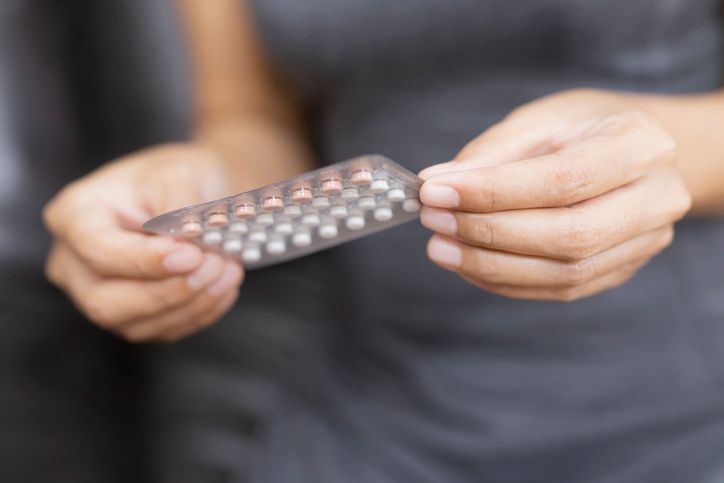
Hormonal birth control may cause temporary breast enlargement
Many people notice changes in breast size after starting hormonal birth control. Pills, patches, and hormonal IUDs often contain synthetic forms of estrogen and progesterone, which can affect breast tissue. Estrogen stimulates fluid retention and growth in the breast area, sometimes leading to slight swelling or a fuller appearance in the first few months of use.
Other medications may affect breast size
Beyond birth control, some antidepressants, anti-anxiety medications, and blood pressure treatments may alter hormone levels. These shifts can influence breast tissue indirectly, depending on how your body responds. Changes may be subtle and often reverse once the medication is stopped or adjusted.
Each body reacts differently to hormone-based drugs
Not everyone experiences breast enlargement from medications. The response depends on your baseline hormone levels, sensitivity to estrogen, and overall health. For some, changes are temporary. For others, breast tissue may remain slightly fuller as long as the medication is used.
Side effects should be monitored with care
If you experience ongoing breast swelling, tenderness, or size changes after starting a new medication, speak with your healthcare provider. They can help determine whether the changes are expected, temporary, or related to another factor. Adjustments to dosage or switching to a different treatment may help minimize unwanted effects.
Hormone-sensitive breast tissue responds quickly to changes in estrogen and other hormones. This is why it's important to stay aware of how your medications may affect your body and check in regularly if something feels off.
Book Now to Experience
B6 Bust Lift Treatment
1 Minute Self-Registration
Date should not be before minimal date

Diet and Exercise Influence Estrogen and Breast Size
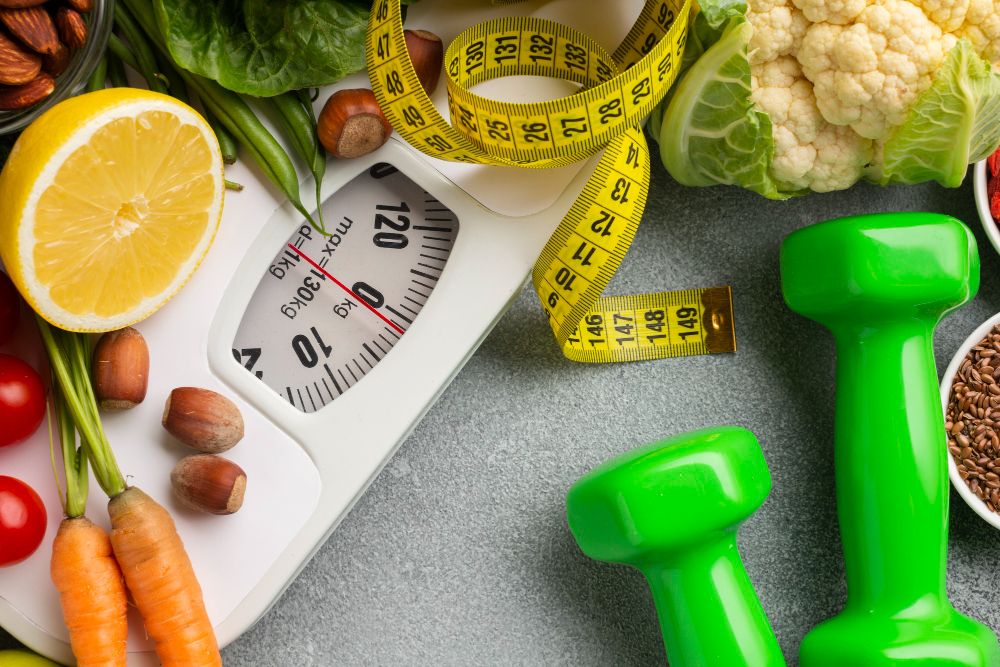
Nutrition supports natural hormone production
What you eat plays a direct role in how your body produces and processes estrogen. Foods rich in fiber, healthy fats, and plant-based nutrients can support hormonal balance. A well-rounded diet helps maintain steady estrogen levels, which can impact breast development, density, and size over time.
Phytoestrogens may offer mild hormonal effects
Certain foods like soy, flaxseeds, and chickpeas contain phytoestrogens—plant compounds that act like weak forms of estrogen in the body. These can interact with estrogen receptors in breast tissue, but their effect is mild compared to natural hormones or medical treatments. While they won’t cause dramatic breast enlargement, they may contribute to hormonal stability when part of a balanced diet.
Exercise helps regulate hormone levels
Regular physical activity supports a healthy weight, which is closely tied to estrogen balance. Body fat stores and produces small amounts of estrogen, so weight gain or loss can influence hormone levels. Moderate cardio and strength training help maintain this balance, indirectly supporting breast health and tissue consistency.
Extreme habits may disrupt estrogen balance
Very low body fat or over-exercising can lower estrogen levels, sometimes leading to reduced breast volume or changes in menstrual cycles. On the other hand, excessive weight gain may increase estrogen levels beyond normal, which could affect breast tissue in different ways.
Sustainable habits are more effective than quick fixes. A nutrient-dense diet and regular movement can help keep estrogen levels steady and support your body's natural breast structure over time.

Estrogen Affects Breast Density and Screening Results

Higher estrogen levels increase breast density
Estrogen plays a key role in maintaining breast density. When estrogen levels are higher—such as during the reproductive years, pregnancy, or with certain hormone therapies—breast tissue tends to be denser. This means there's more glandular and connective tissue compared to fatty tissue. Denser breasts can feel firmer and may appear fuller, but they also come with specific health considerations.
Breast density does not always mean larger size
Dense breasts are not necessarily large. Some people with smaller breasts may still have high breast density due to a higher amount of glandular tissue. Breast size refers to volume, while density refers to the internal makeup of the tissue.
Dense tissue can affect health screenings
High breast density can make it harder to detect abnormalities in mammograms. This is because both dense tissue and some types of breast cancer appear white on imaging, which can make early signs less visible. People with dense breasts may be advised to get additional screening, such as ultrasounds or MRIs, depending on their risk factors.
Hormone therapy may influence density
Taking estrogen, either through hormone replacement therapy or gender affirming hormone therapy, can increase breast density in some people. This change depends on dosage, duration, and individual response. If you're using hormone therapy, regular breast health monitoring is important.
While breast density doesn’t directly impact breast size, it reflects how estrogen influences the internal structure of the breast. Being aware of these changes helps you stay informed about your overall breast health and the importance of proper medical screening.
Book Now to Experience
B6 Bust Lift Treatment
1 Minute Self-Registration
Date should not be before minimal date

Myths About Estrogen and Breast Enlargement

Herbal supplements are not a shortcut to larger breasts
Many products claim to increase breast size by boosting estrogen for breast growth. These often include herbal pills or teas made with ingredients like fenugreek, wild yam, or fennel. Despite popular marketing, there’s no research showing these supplements lead to real breast development or changes in hormone levels. Breast tissue doesn’t respond to herbs the way it does to actual hormonal changes in the body.
Estrogen pills sold online can be risky
Some products sold as “natural estrogen boosters” or “estrogen hormone replacement therapy” promise fast breast enlargement. These unregulated pills may affect blood pressure, hormone levels, or cause fluid retention. Without guidance from a healthcare provider, taking estrogen from unknown sources can lead to side effects without delivering real growth in the breast area.
Social media claims often exaggerate results
Social media often spreads misleading advice about breast growth. Claims about essential oils, massage routines, or special bras boosting estrogen or making breasts grow are not backed by research. These trends may sound harmless but can give false expectations and distract from more reliable treatments that actually affect chest tissue and hormone balance.
Real growth comes from real hormonal change
Estrogen plays an important role in breast tissue development, but it doesn’t work alone. Factors like age, body fat, genetics, and hormonal balance all contribute to breast size. People taking estrogen as part of gender affirming hormone therapy or medical hormone therapy may see breast growth, but these changes happen gradually and with medical supervision. A healthcare provider can explain safe and evidence-based ways to support breast enlargement or address concerns with breast volume and shape.

Supporting Estrogen-Driven Breast Growth with B6 Bust Lift Treatment
A non-invasive way to enhance breast shape and support hormonal effects
Estrogen plays a major role in breast growth, especially during life stages like puberty, pregnancy, and hormone therapy. But for people looking to improve breast volume, firmness, or contour—without surgery—non-invasive options like the B6 Bust Lift Treatment can offer additional support.
The B6 Bust Lift Treatment is a non-surgical method designed to work with the body’s natural processes. It targets acupoints connected to breast tissue and stimulates gentle hormonal activity, including estrogen secretion, through low-risk, localised stimulation. By activating the mammary glands and encouraging circulation, the treatment enhances the effect of naturally occurring or medically induced estrogen, contributing to fuller, firmer breast outlines.
How the B6 Bust Lift Treatment works
The treatment starts with a consultation to adjust massage strength and equipment settings. Then, using a handheld device, gentle acupressure is applied to specific areas near the breast tissue, encouraging hormone activity, including collagen production and blood flow. These reactions help firm up lax tissue, stimulate glandular tissue, and improve overall shape without the use of implants or incisions.
Massage techniques also help guide side-set fat toward the center of the chest, giving a more lifted, symmetrical appearance. This helps sculpt a fuller bust line and supports the body’s natural breast development process.
Key benefits of B6 Bust Lift Treatment
• Non-invasive: No needles, no downtime, and suitable for most skin types
• Supports hormonal balance: Encourages local hormone secretion, including estrogen, to target areas directly
• Improves breast contour: Helps shift and lift fatty tissue for better shape and volume
• Enhances skin texture: Stimulates collagen, supporting firmer, smoother breast skin
• Boosts circulation: Promotes healthier breast tissue through improved blood flow and metabolism
This treatment is ideal for people taking estrogen as part of hormone therapy, as well as anyone experiencing natural changes in breast size due to age, weight fluctuations, or pregnancy. While the treatment won’t replace the role of estrogen, it can enhance your results by stimulating the body’s response at the tissue level.
Looking to support your breast shape naturally while enhancing the effects of estrogen for breast growth?
Book a personalised consultation to see if B6 Bust Lift Treatment is right for you.
New Beauty's B6 Bust Lift TreatmentBook Now to Experience
B6 Bust Lift Treatment
1 Minute Self-Registration
Date should not be before minimal date
FAQ
Can estrogen increase breast size permanently?
Estrogen can cause breast tissue to grow, especially during puberty, pregnancy, and hormone therapy. However, the changes are not always permanent. Breast size may decrease if estrogen levels drop, such as after stopping hormone therapy or during menopause. Other factors like age, weight changes, and body fat distribution also affect how long the effects last. Maintaining hormonal balance and a healthy weight can help support longer-lasting results.
How does body fat affect breast growth with estrogen?
Body fat plays a key role in how your breasts respond to estrogen. Fatty tissue in the breast area is influenced by both hormone levels and overall weight. People with higher body fat may experience more visible breast enlargement when estrogen levels increase. However, this growth is more related to fat accumulation than glandular breast development. A combination of estrogen stimulation and moderate fat levels can result in fuller breast volume and shape.
What is the difference between breast augmentation and hormone-based breast growth?
Breast augmentation is a surgical procedure that inserts implants to increase breast size, while hormone-based breast growth relies on natural changes in breast tissue triggered by estrogen and other hormones. Hormonal changes affect glandular and fatty tissue, not just size but also texture and density. Breast augmentation provides immediate results but doesn’t change breast tissue itself, while hormone-induced growth is gradual and more dependent on the body’s internal response.
Can estrogen hormone replacement therapy cause breast tenderness?
Yes, breast tenderness is a common effect of estrogen hormone replacement therapy, especially in the early stages. As estrogen stimulates breast ducts and tissue, many people notice mild soreness or sensitivity. This response is normal and often settles as hormone levels stabilize. If the tenderness becomes persistent or uncomfortable, it's best to speak with a healthcare provider to adjust your hormone levels or dosage.
Are there risks of breast cancer with increased estrogen levels?
Higher estrogen levels have been linked to an increased risk of breast cancer, particularly with long-term use of hormone therapy in postmenopausal women. However, risk depends on many factors including family history, age, and the type of hormone treatment used. People taking estrogen as part of gender affirming hormone therapy or medical treatment should have regular check-ups to monitor breast health. Always consult a healthcare provider before starting any hormone-based treatment to assess your personal risk.
Recommended Articles
COPYRIGHT© NEW BEAUTY MANAGEMENT LIMITED 2025. ALL RIGHT RESERVED.


